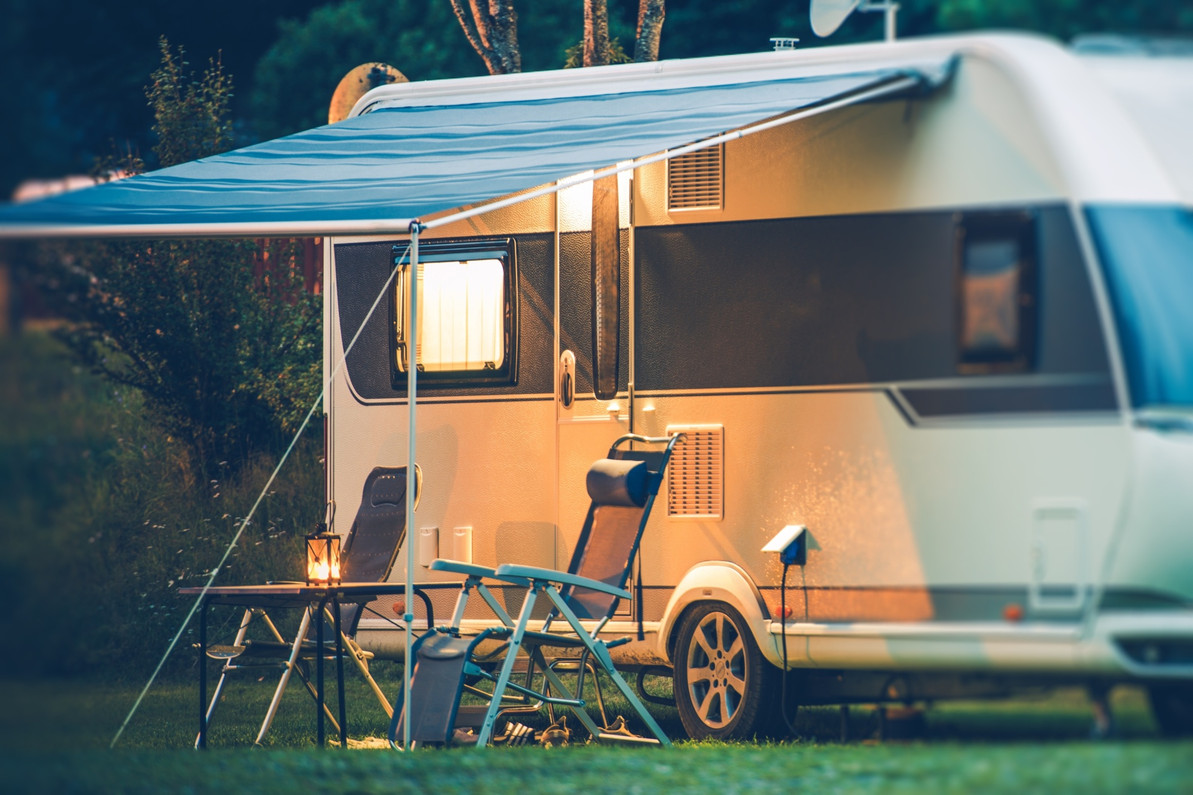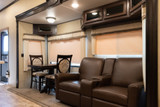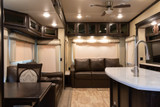Made in the Shade: RV Awnings and their Benefits | RecPro
RV awnings are an essential addition to any recreational vehicle, providing shade, shelter, and added living space while on the road. Whether you're a full-time RVer or enjoy weekend trips in your motorhome, an awning can add quite a bit to your experience. From manual to electric options and different types, such as patio awnings, slide-out awnings, and window awnings, there are a variety of RV awnings available on the market to suit your specific needs, preferences, and aesthetic taste. This blog post will delve into the different types of RV awnings, their features, and the benefits they offer to help you make an informed decision on the best awning for your RV.
What Are RV Awnings?
RV awnings are outdoor shade structures that can be mounted on the side of a recreational vehicle or motorhome. They are typically made of a durable, water-resistant material such as vinyl or acrylic and are designed to provide shade and shelter while the RV is parked.
Awnings can be manual or electric and can be extended or retracted as needed. They can also come in different sizes and styles to match the specific make and model of the RV. Awnings can be used for various purposes, such as providing shade for outdoor activities, protecting the interior of the RV from the sun, or creating a private outdoor living space.
Different Styles of Awning
There are several types of awnings, including patio, slide-out, and window awnings. Awnings of all archetypes are available in many colors and sizes.
Patio awnings are mounted on the side of the RV and extend out to provide a large area of shade and shelter. These are also known as side awnings and are the most common type of RV awning. Patio awnings can be either manually actuated or electrically controlled. Some can be retrofitted with a sunshade attachment as well.
Slide-out awnings are installed on slide-out sections of the RV and extend and retract with the slide-out.
The purpose of a slide-out awning is to provide shade and shelter for the slide-out section of the RV when it is opened. This can be especially useful for protecting the interior of the RV from the sun and preventing heat build-up, as well as helping to maintain a comfortable temperature inside your RV. Additionally, slide-out awnings also serve as a way to protect the slide-out itself from damage caused by UV radiation, rain, and other weather conditions, prolonging the life of the slide-out mechanism.
Window awnings are mounted above the RV windows and provide shade and privacy, blocking UV radiation and heat from the outdoors and saving on heating or cooling costs.
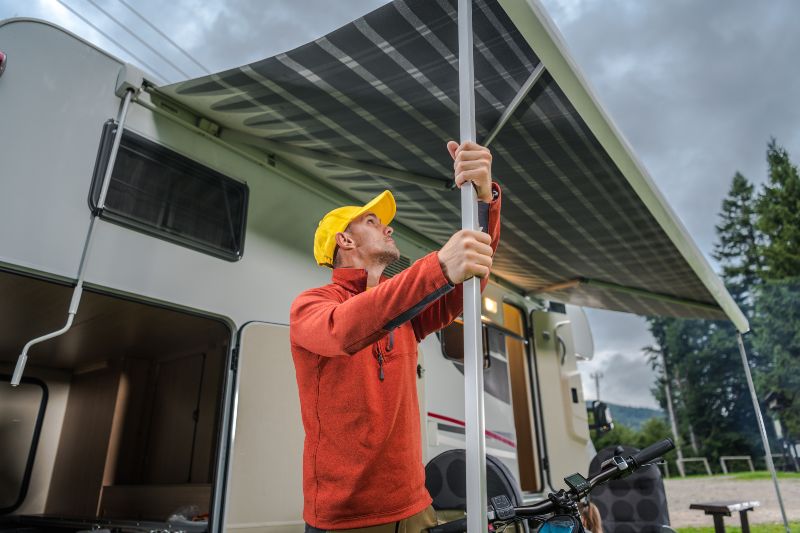
Electric vs. Manual options
Electric and manual are the two main types of RV awnings. Both types serve the same purpose: to provide shade and shelter while the RV is parked, but they are operated differently.
Manual awnings are operated by cranking a handle or pulling on a rope to extend or retract the awning. They are typically less expensive than electric awnings and can be a good option for people looking for a budget-friendly option. However, manual awnings can be more labor-intensive and require more physical effort to extend or retract.
On the other hand, electric awnings are operated by a switch or remote control, making it easy to extend or retract the canopy with just the press of a button. They are more convenient and require less physical effort, but they are typically more expensive than manual awnings. Electric awnings also require electrical power to operate, which means they need to be connected to a power source or have a battery backup.
Choosing an electric or manual awning will depend on your personal preference and budget. Electric awnings are more convenient and require less physical effort, but they are more expensive than manual awnings. Manual awnings are a budget-friendly option but require more physical effort to operate.
Tips for Safe Use
To safely deploy your RV awning, it's essential to check the weather forecast and ensure the conditions are suitable for extending the awning. High winds or heavy rain can cause damage to the awning and the RV.
Next, ensure the awning is appropriately secured and tensioned before extending it. This will help to prevent damage from wind or other weather conditions. Follow the manufacturer's instructions for opening the awning, whether manual or electric.
When extending the awning, make sure that the area around the RV is clear of any obstacles or debris that could get caught in the awning or interfere with the proper deployment. Use a ladder or step stool if necessary to reach the awning.
Once the awning is fully extended, ensure it is adequately secured and tensioned to prevent it from collapsing or falling. Check for any wear or damage and have any repairs done promptly.
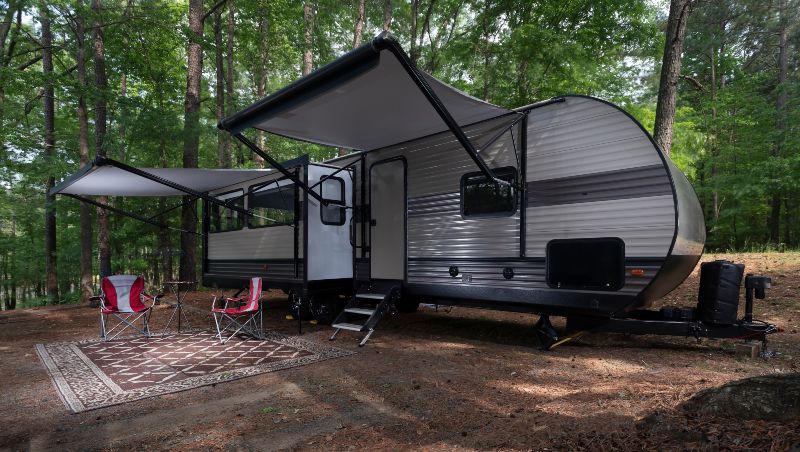
Bring your shade along with you!
RV awnings are a great addition to any recreational vehicle as they provide a convenient and comfortable way to enjoy the outdoors while on the road. They also increase the functionality, privacy, and livability of your RV and help you to save on your energy costs, all at the same time.
Whether you live full-time in your RV or prefer an occasional weekend trip in your rig, an awning can significantly enhance the quality of your RV experience. From manual to electric options and different types such as patio awnings, slide-out awnings, and window awnings, there are a variety of RV awnings available in the market to suit your specific needs.
What is your favorite way to use your awning, catching a reprieve from the blazing sun or enjoying the pitter-patter of a rainstorm? Let us know down in the comments!
Recent Posts
-
How to Keep Your Pets Safe While Camping
RVing and camping are a great getaway from the hustle and bustle of work and the city and the day-to …Jul 2nd 2024 -
Why Replace Your RV Furniture?
You may wonder when is the best time to replace your RV furniture. There is no one right answer to t …May 20th 2024 -
Can You Put Regular Furniture in an RV?
Many new and old RV owners ask themselves this question when they feel the need to update th …Apr 25th 2024 -
4 Tips for Securing RV Furniture While Traveling | RecPro
How To Secure RV Furniture There are few things that beat going out on an adventure with an RV …Apr 25th 2024 -
How To Keep RV Furniture From Peeling
Peeling RV Furniture | Why it Peels and How to Stop it Your RV furniture is a point of pride on yo …Apr 25th 2024 -
Turning up the Heat With an RV Fireplace
There’s an unlimited number of cool and exciting features you could add to your recreational vehicle …Apr 25th 2024

